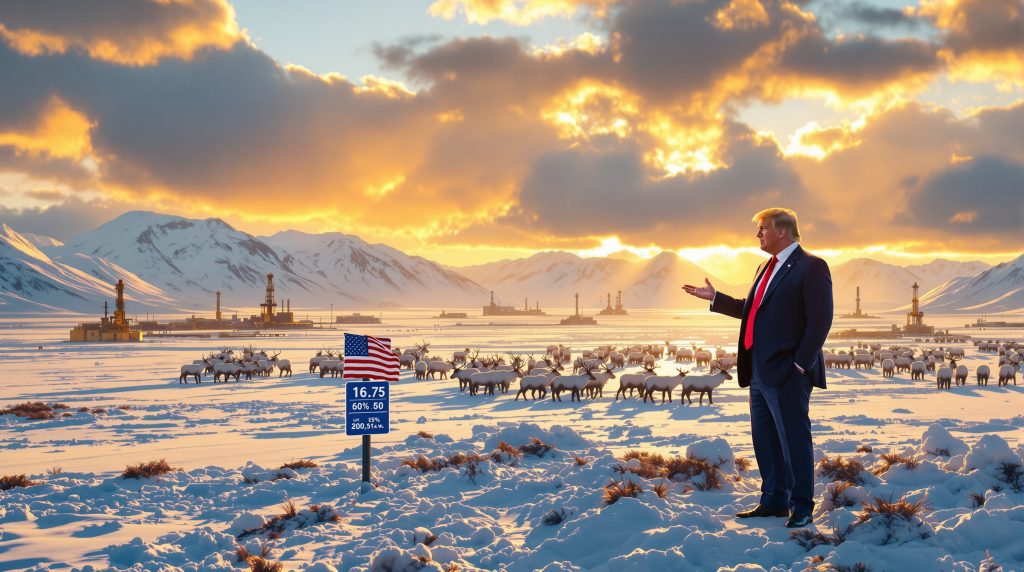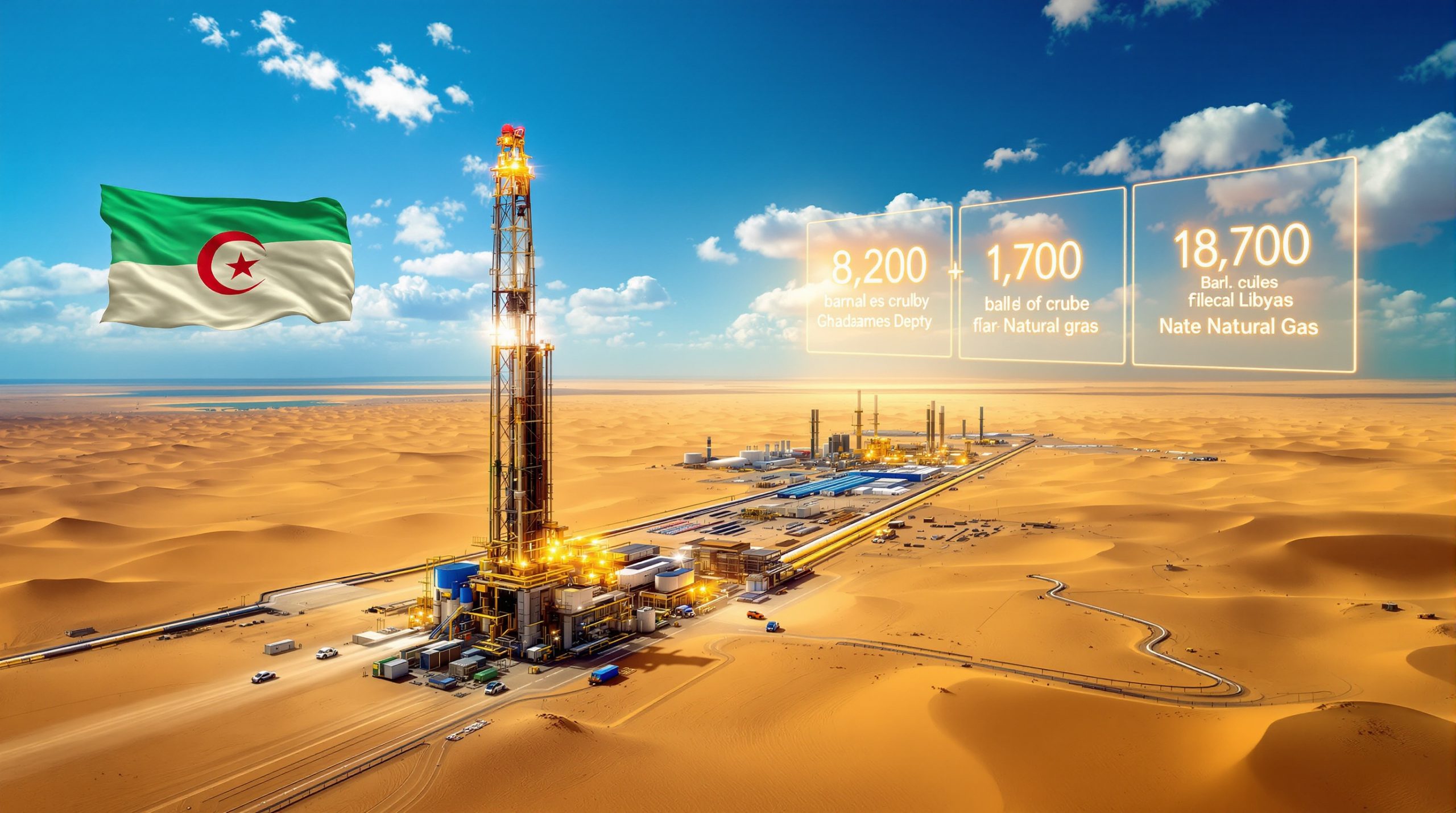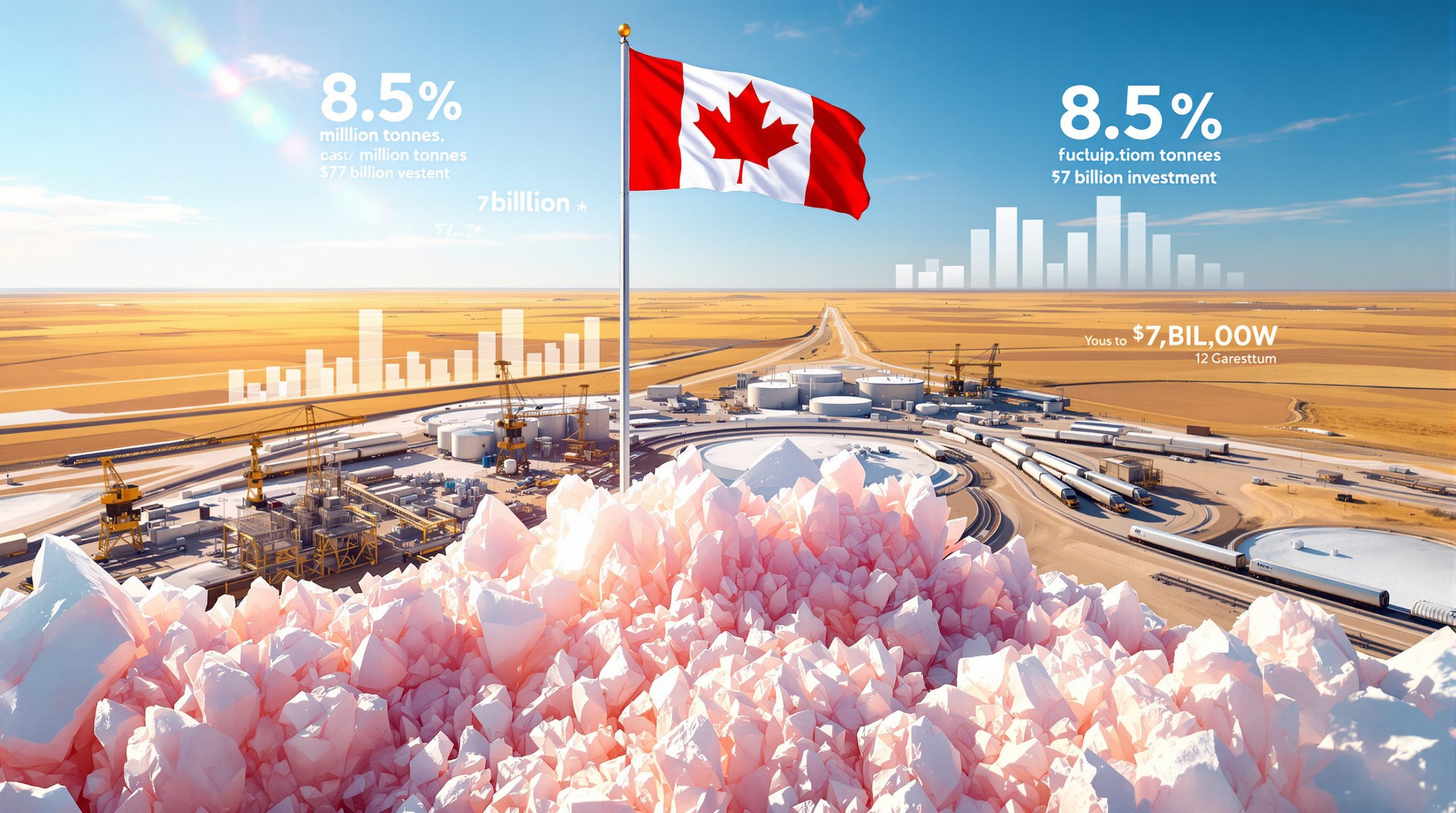Understanding the Policy Reversal Behind ANWR's Energy Future
President Trump's executive action to restore oil and gas leasing opportunities in Alaska's Arctic National Wildlife Refuge marks a dramatic shift in American energy policy. This decision affects approximately 1.56 million acres of the Coastal Plain, potentially accessing what energy analysts consider the nation's most significant untapped onshore petroleum reserves.
The policy reversal comes after years of regulatory restrictions and represents one of the most consequential energy decisions of the current administration. Industry experts suggest this move could fundamentally alter America's energy landscape, though actual production remains years away due to logistical and environmental challenges.
Key Policy Changes:
• Full restoration of lease authority previously suspended
• Expedited environmental review processes
• Minimum of four planned lease sales
• Fast-track approval procedures for development permits
How Does ANWR's Legislative History Shape Current Energy Policy?
The Four-Decade Congressional Battle
The Arctic Refuge energy development debate traces back to the Alaska National Interest Lands Conservation Act of 1980, which deliberately left the Coastal Plain's development status unresolved. This legislative ambiguity created decades of political conflict between conservation advocates and energy development supporters.
The breakthrough occurred through the 2017 Tax Cuts and Jobs Act, where Republican lawmakers successfully inserted provisions mandating federal lease sales within the refuge. This marked the first instance of any U.S. national wildlife refuge being designated for hydrocarbon extraction activities.
Furthermore, this development occurs alongside broader discussions about OPEC production impact on global markets, illustrating how domestic policy changes interact with international energy dynamics.
Current Administrative Framework
| Policy Element | Previous Status | Current Status |
|---|---|---|
| Lease Authority | Suspended | Fully restored |
| Environmental Reviews | Extended timeline | Expedited process |
| Lease Sales Schedule | Cancelled | Minimum 4 sales planned |
| Permit Processing | Standard timeline | Fast-track approval |
The legislative history demonstrates how energy policy can become entangled with broader fiscal legislation. The 2017 provision requiring lease sales was primarily driven by revenue generation needs rather than pure energy security considerations.
What Economic Impact Could Arctic Refuge Development Generate?
Alaska's Energy Production Transformation
Alaska's oil output has declined dramatically from peak production levels exceeding 2 million barrels daily in the late 1980s to current production below 500,000 barrels per day. The Arctic Refuge development represents a potential pathway to reverse this trend and revitalise the state's petroleum-dependent economy.
However, recent data shows broader U.S. production continues reaching new heights. According to Reuters reporting, U.S. oil output climbed by 133,000 barrels per day to an all-time high of 13.58 million bpd in June 2025, demonstrating the nation's overall production strength despite regional variations.
Industry analysts project successful development could create thousands of direct employment opportunities while generating substantial tax revenues for both state and federal governments. Most estimates suggest initial output wouldn't begin until the early 2030s due to infrastructure and regulatory requirements.
National Energy Security Implications
The refuge's petroleum reserves could significantly enhance U.S. energy independence by reducing reliance on international oil imports. Energy security experts view domestic Arctic production as strategically valuable, particularly given global supply chain vulnerabilities and geopolitical tensions affecting traditional suppliers.
In addition, the timing coincides with recent Trump tariff oil rally trends, where policy decisions create ripple effects across energy markets.
Production Cost Considerations:
• Analysts at Enverus predict marginal U.S. shale production costs could increase from approximately $70 per barrel to $95 per barrel by the mid-2030s
• Many U.S. producers need oil prices above $65 per barrel for new drilling profitability
• Larger producers may achieve breakeven points in the high $50s per barrel
• Arctic production faces unique cost challenges due to extreme operating conditions
Why Do Environmental Groups Oppose Arctic Refuge Development?
Wildlife Conservation Concerns
Conservation organisations highlight potential impacts on the Porcupine caribou herd, which uses the Coastal Plain as critical calving grounds. Environmental scientists warn that industrial infrastructure could disrupt migration patterns unchanged for millennia.
The refuge also supports polar bears, Arctic foxes, and numerous migratory bird species that conservationists argue face increasing pressure from climate change. Additional industrial activity could compound existing environmental stressors.
Climate Change Considerations
Environmental advocates argue that increased fossil fuel extraction contradicts international climate commitments and could set dangerous precedents for protected area management worldwide.
Global Environmental Implications:
• Conflict with international climate agreements and net-zero targets
• Arctic ecosystems face heightened vulnerability to industrial disturbance
• Precedent-setting implications for protected wilderness areas globally
• Carbon emissions from new production sources undermine climate goals
How Do Indigenous Communities View Arctic Refuge Development?
Subsistence Rights and Cultural Heritage
The Gwich'in Nation has historically opposed development, citing concerns about caribou populations essential to their subsistence lifestyle and cultural identity. Their opposition stems from generations of dependence on caribou for food, clothing, and spiritual practices.
Conversely, some Inupiat communities support development, viewing it as an economic opportunity that could provide jobs and revenue while potentially funding community infrastructure improvements.
Sovereignty and Consultation Issues
Indigenous rights advocates emphasise the importance of meaningful consultation processes that respect tribal sovereignty and traditional ecological knowledge. The expedited timeline of current policy implementation raises concerns about adequate community engagement.
Key Community Concerns:
• Protection of traditional hunting and fishing rights
• Preservation of cultural sites and sacred areas
• Economic benefits versus environmental risks
• Meaningful participation in decision-making processes
What Are the Technical Challenges of Arctic Development?
Infrastructure and Logistics
Developing Arctic resources requires specialised infrastructure capable of operating in extreme conditions. Temperature variations from -40°F to 80°F, combined with permafrost considerations, create unique engineering challenges that significantly increase development costs.
Transportation infrastructure represents another significant hurdle, as the refuge lacks existing road networks or pipeline connections to processing facilities. Companies must construct extensive support systems before extraction can begin.
Environmental Mitigation Technologies
Modern Arctic development employs advanced technologies designed to minimise environmental footprints:
Directional drilling reduces surface disturbance by accessing multiple reservoir targets from single surface locations
Elevated pipelines protect permafrost integrity and maintain wildlife movement corridors
Seasonal access restrictions limit industrial activity during environmentally sensitive periods
Real-time monitoring systems continuously track environmental impacts and wildlife interactions
These technological advances allow for more efficient resource extraction while addressing some environmental concerns, though critics argue they cannot eliminate all ecological risks.
How Might Global Oil Markets Respond to Arctic Production?
Supply and Pricing Dynamics
Arctic Refuge production could add significant volumes to global oil supplies, potentially influencing international pricing mechanisms. However, the timeline for meaningful production means immediate market impacts remain limited.
Energy economists note that Arctic oil's high production costs may make it economically viable only during periods of elevated oil prices, creating natural market balancing mechanisms. This cost structure could provide some price stability during volatile periods.
Geopolitical Considerations
Increased U.S. domestic production could reduce American dependence on imports from politically unstable regions, potentially providing greater foreign policy flexibility. This energy independence could influence international relationships and trade negotiations.
Furthermore, the decision reflects broader trends in US policy Venezuela relations, where energy security considerations shape diplomatic approaches.
Market Impact Factors:
| Factor | Short-term Impact | Long-term Impact |
|---|---|---|
| Production Volume | Minimal | Significant |
| Price Influence | Limited | Moderate |
| Energy Security | Symbolic | Substantial |
| Geopolitical Leverage | Minimal | Enhanced |
What Legal Challenges Could Delay Development?
Anticipated Litigation Strategies
Environmental organisations have signalled intentions to challenge the policy reversal through federal courts. Legal strategies likely include challenges based on environmental impact assessments, endangered species protections, and indigenous rights considerations.
The Environmental Defense Fund has already indicated plans for comprehensive legal challenges to protect this pristine wilderness area.
Potential Legal Challenges:
• Environmental impact assessment adequacy
• Endangered Species Act compliance violations
• National Environmental Policy Act procedural failures
• Indigenous consultation and consent requirements
Regulatory Compliance Requirements
Despite expedited permitting processes, companies must satisfy numerous federal regulations covering air quality, water protection, wildlife conservation, and worker safety. These requirements could extend development timelines regardless of political support.
The complex regulatory landscape means that even with administrative support, developers face significant compliance burdens that could delay project implementation for years.
How Does This Decision Affect Renewable Energy Transition?
Energy Portfolio Balance
The Arctic Refuge decision occurs alongside continued renewable energy expansion, creating a complex energy portfolio incorporating both traditional and alternative sources. Policy analysts debate whether increased fossil fuel production undermines or complements renewable energy goals.
Some experts argue that domestic oil production provides energy security during the renewable transition, while others contend it delays necessary shifts toward cleaner alternatives. However, this must be viewed alongside broader energy transition strategies that continue developing across multiple sectors.
Investment Flow Implications
Comparative Investment Trends:
| Energy Sector | 2024 Investment | Projected 2025 Investment |
|---|---|---|
| Arctic Oil Development | $0.5 billion | $2.1 billion |
| Renewable Energy | $45.2 billion | $52.8 billion |
| Energy Storage | $12.3 billion | $18.7 billion |
The data suggests renewable energy investment continues significantly outpacing Arctic development, though the policy shift may attract increased traditional energy investment over time.
What International Precedents Does This Decision Set?
Global Protected Area Management
The Arctic Refuge decision could influence how other nations approach energy development within protected areas. International conservation organisations express concerns about precedent-setting effects on global wilderness preservation efforts.
Countries with significant protected areas containing potential energy resources may view this decision as justification for similar policies, potentially undermining international conservation commitments.
Climate Policy Alignment
The policy reversal creates tension with international climate agreements and could affect U.S. leadership in global environmental initiatives. Climate diplomacy experts suggest this decision may complicate future international negotiations.
Consequently, the decision intersects with broader patterns of global trade impact as nations reassess their energy and environmental priorities.
International Implications:
• Potential influence on global protected area policies
• Complications for international climate diplomacy
• Questions about U.S. environmental leadership credibility
• Precedent for resource development in sensitive ecosystems
Disclaimer: This analysis involves forecasts, speculation, and policy predictions that may not materialise as anticipated. Energy market conditions, environmental regulations, and political circumstances can change significantly, affecting actual outcomes. Oil and gas development involves substantial financial risks and environmental uncertainties that investors and stakeholders should carefully consider.
Trump Reopens Alaska's Arctic Refuge to Oil and Gas Drilling represents a fundamental shift in how America balances energy security against environmental conservation. This policy reversal will likely generate years of legal challenges, environmental debates, and economic analysis as stakeholders navigate competing priorities.
The ultimate success of Arctic development depends on numerous factors including oil prices, technological advances, environmental compliance, and political stability. The debate reflects broader questions about resource development in pristine environments, indigenous rights, climate change mitigation, and the role of government in balancing competing societal interests.
As implementation proceeds, constructive engagement amongst all stakeholders becomes essential to ensure responsible development that considers economic, environmental, and cultural concerns while addressing America's long-term energy security needs.
Considering Investments in Energy and Resource Development?
Discovery Alert's proprietary Discovery IQ model delivers real-time alerts on significant ASX mineral discoveries, instantly empowering subscribers to identify actionable opportunities ahead of the broader market. Begin your 30-day free trial today and secure your market-leading advantage.




